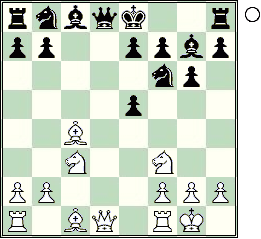Before we start with a new lesson about the pin we are going to repeat the four things that we have learned about the pin in our previous lessons:
1. Remember the difference between an absolute and a relative pin.
 | An absolute pin Black is not allowed to move the knight on c6. | |
 | A relative pin Black is allowed to move the knight, but then (in this case) White will capture the queen. See also the lesson about the pin. |
2. The simple pin
 |
Winning a piece White is able to pin the knight by 32.Rd1 and can capture this knight on the next move 33.Rxd4+. |
3. Attacking a pinned piece
 | In the diagram on the left White is able to pin the piece, but this piece can be defended by the b-pawn. White is still able to capture this piece, because he is able to attack the piece: 27.Bb4 b6 28.d4 Kg7 29.dxc5 See Attacking a pinned piece |
4. A pinned piece isn’t a real defender
 | The knight is pinned. This allows White to capture the rook: 26.Qxb7 See the A pinned piece cannot be counted as a defender lesson |
Next we are going to pay some attention to Chess Tactics explained.



